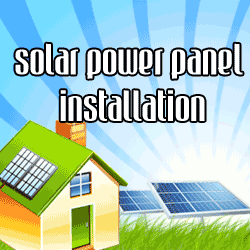

Green designs or sustainable designs are often used in place of each other. They are complementary terms and usually cover all aspects of building green. Confusion however exists in the exact meaning of the term sustainable design. Sustainable design means a design which is more or less self sufficient like a self actuating biosphere.
The important aspects of sustainable design is that the design places the least load on the environment, is able to regenerate most of the resources required for its sustenance and helps improve our way of living. To translate that into practical measures, it involves designing buildings or townships in a holistic fashion utilizing the elements of nature such as sunlight and wind intelligently. These include the use of solar arrays and natural air to reduce consumption of electricity and polluting air conditioners which produce CFCs. A sustainable design looks at conserving water by harvesting rain water. Recycling of water used for bathing for the kitchen garden is yet another aspect. It looks at converting organic waste products into manure for use in the buildings kitchen garden.
A range of initiatives such as sharing a common swimming pool, common rainwater harvesting plant, solar panels all add up to the conservation aspects in a sustainable design. Car-pooling can also be considered as part of sustainable design as it helps conserve natural resources. Locally used material which can be replenished are encouraged in a sustainable design. So if repairs are required of the building, material need not be hauled over long distances but be utilized from around the environment. Converting all these ideas into practice requires government help. Thus there are sustainable design standards which have evolved. The most common sustainable design standard is the LEED standard adopted by USA and some other countries in the world. The scientists too have chipped in by providing life cycle calculations for sustainable designs in the field of architecture and building green infrastructure projects.
These life cycle calculations include life cycle energy analysis and use of modern technology to complement the sustainability of the designs. These include inventing better solar panels, better interface with indigenous building practices with modern equipment and optimum utilization of powerful computing available to arrive at simulations for a truly sustainable design. Sustainable designs strive to achieve the holism expressed in the Greek concept of Gaea or living earth, where everyone is in perfect harmony with the nature.
Renewable & Alternative Energy Resources: http://www.alternativeenergybase.com
For more on green design, goto aia.org.




0 comments:
Post a Comment